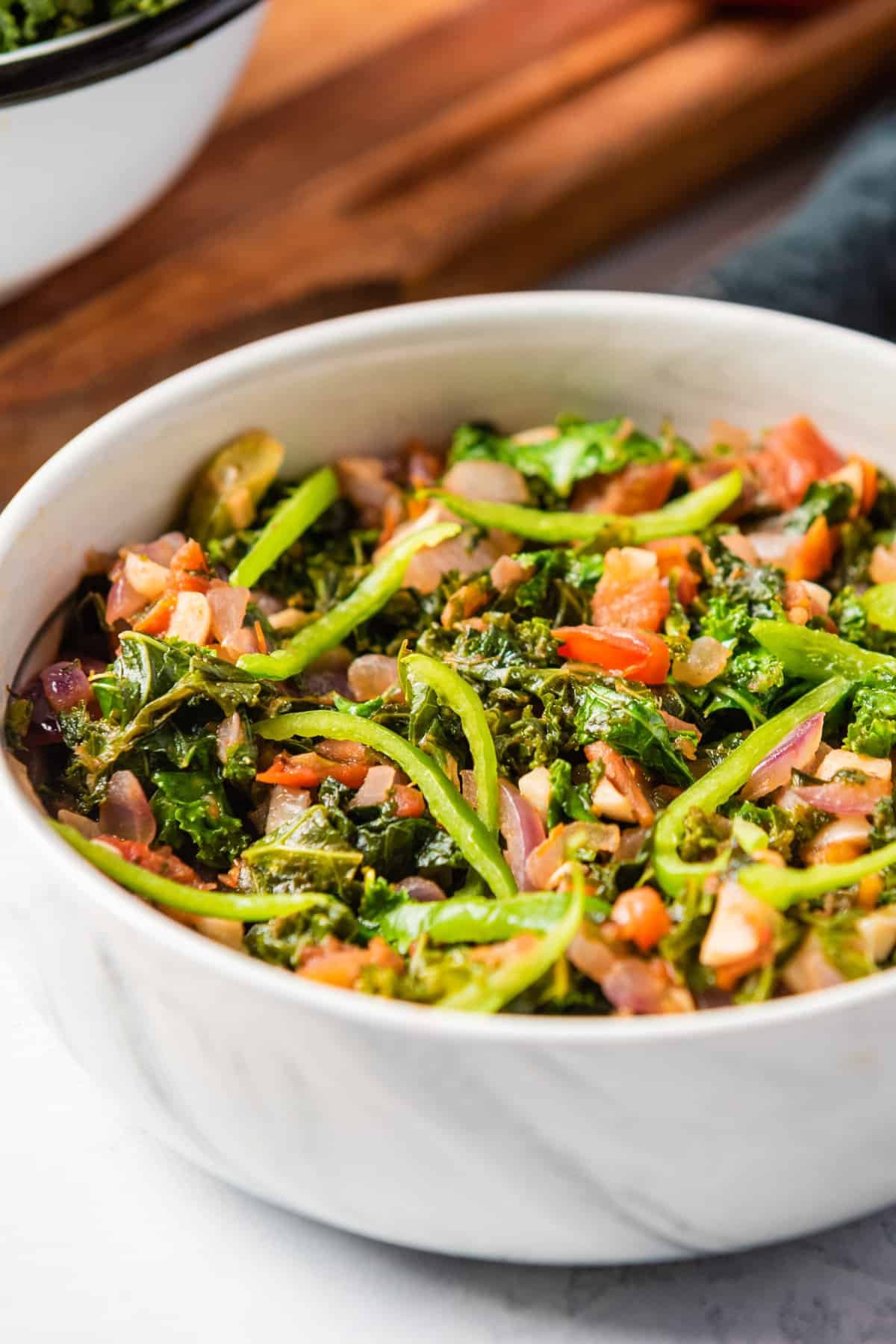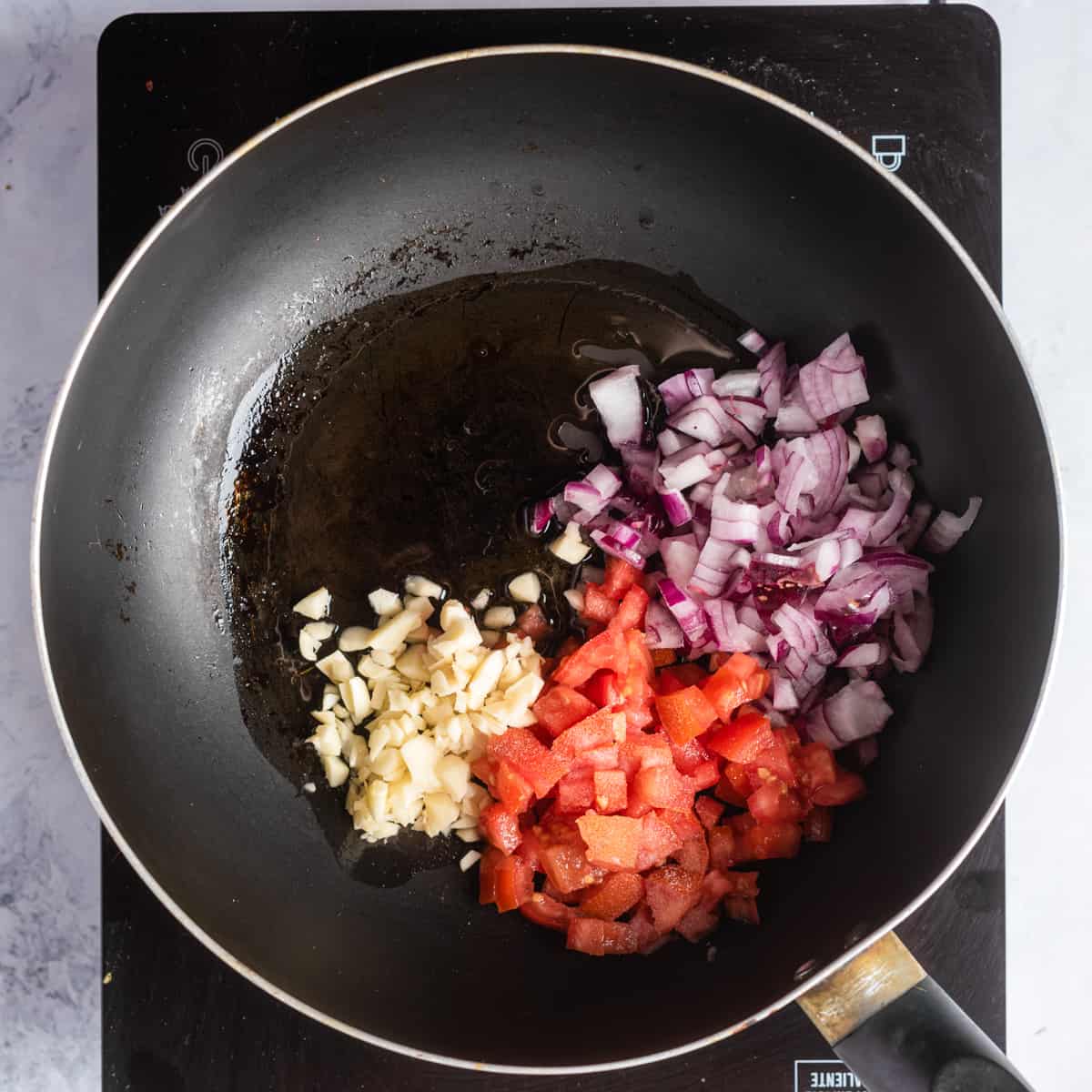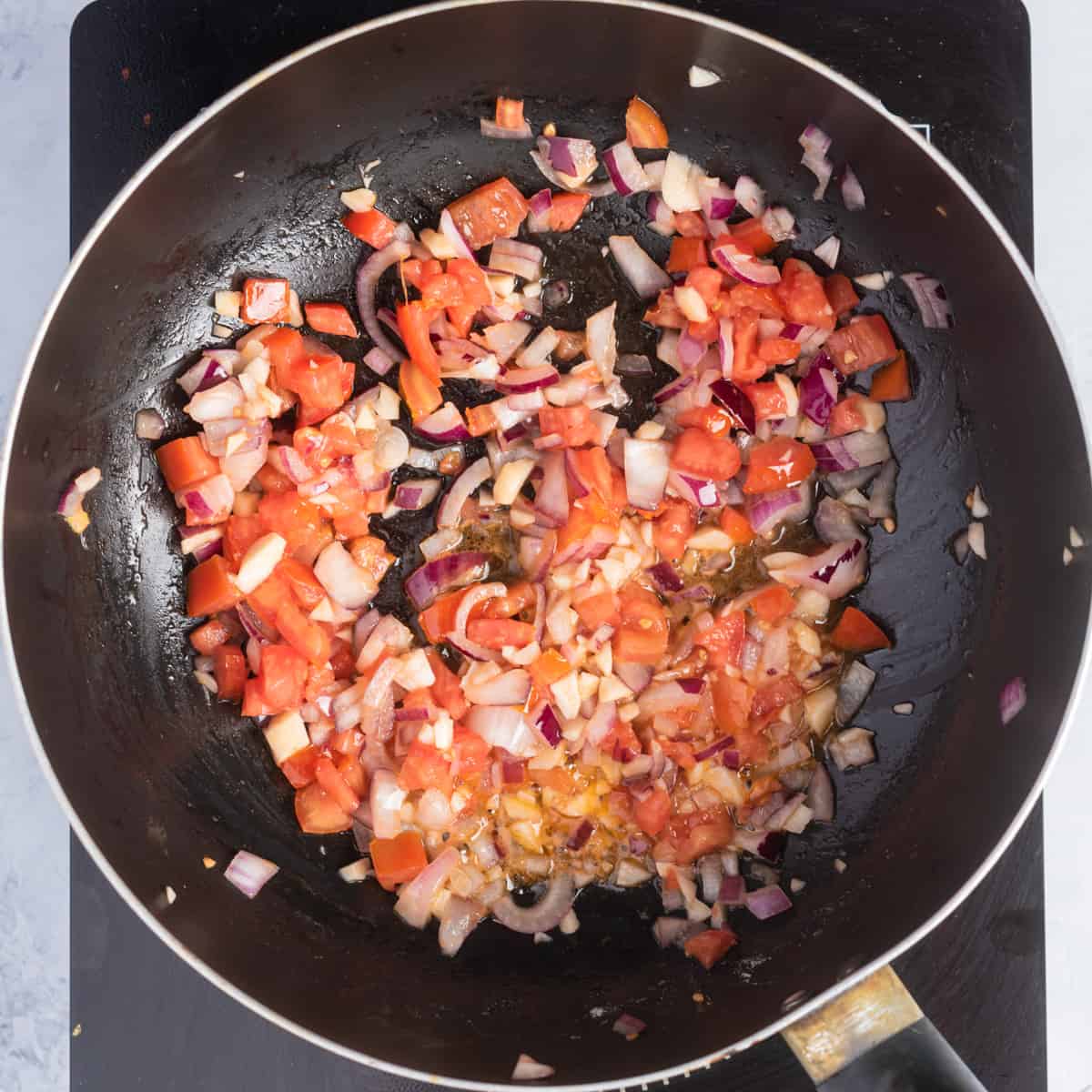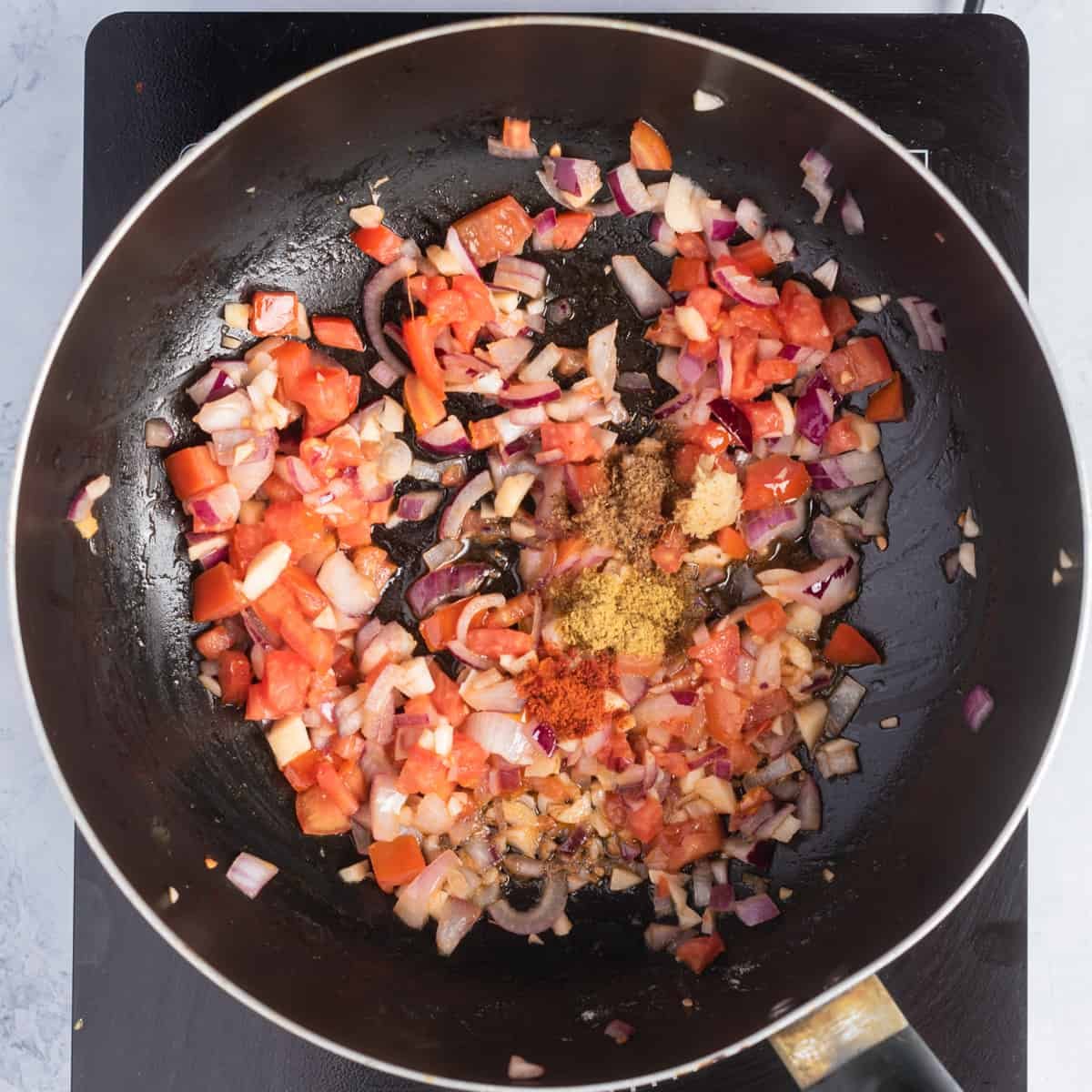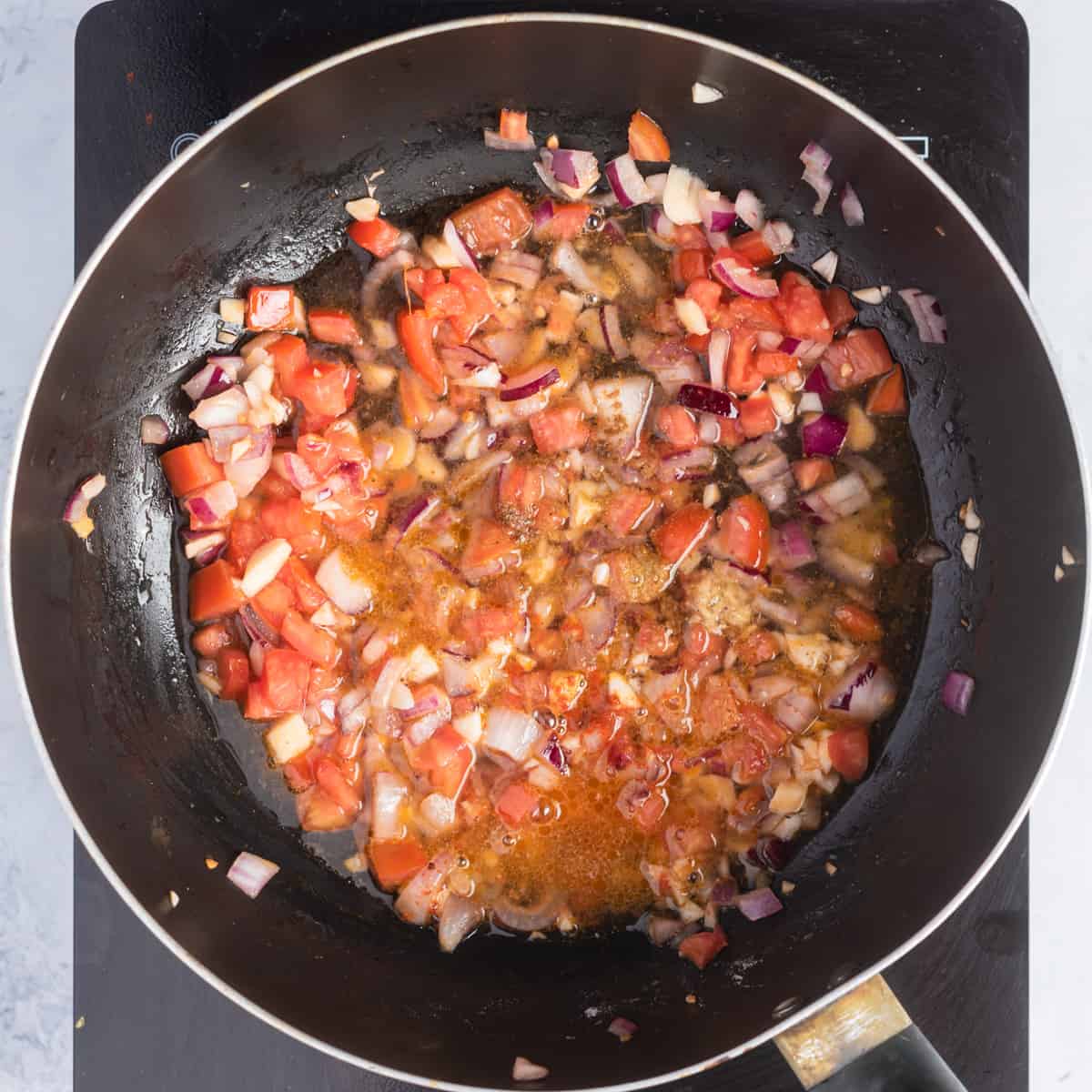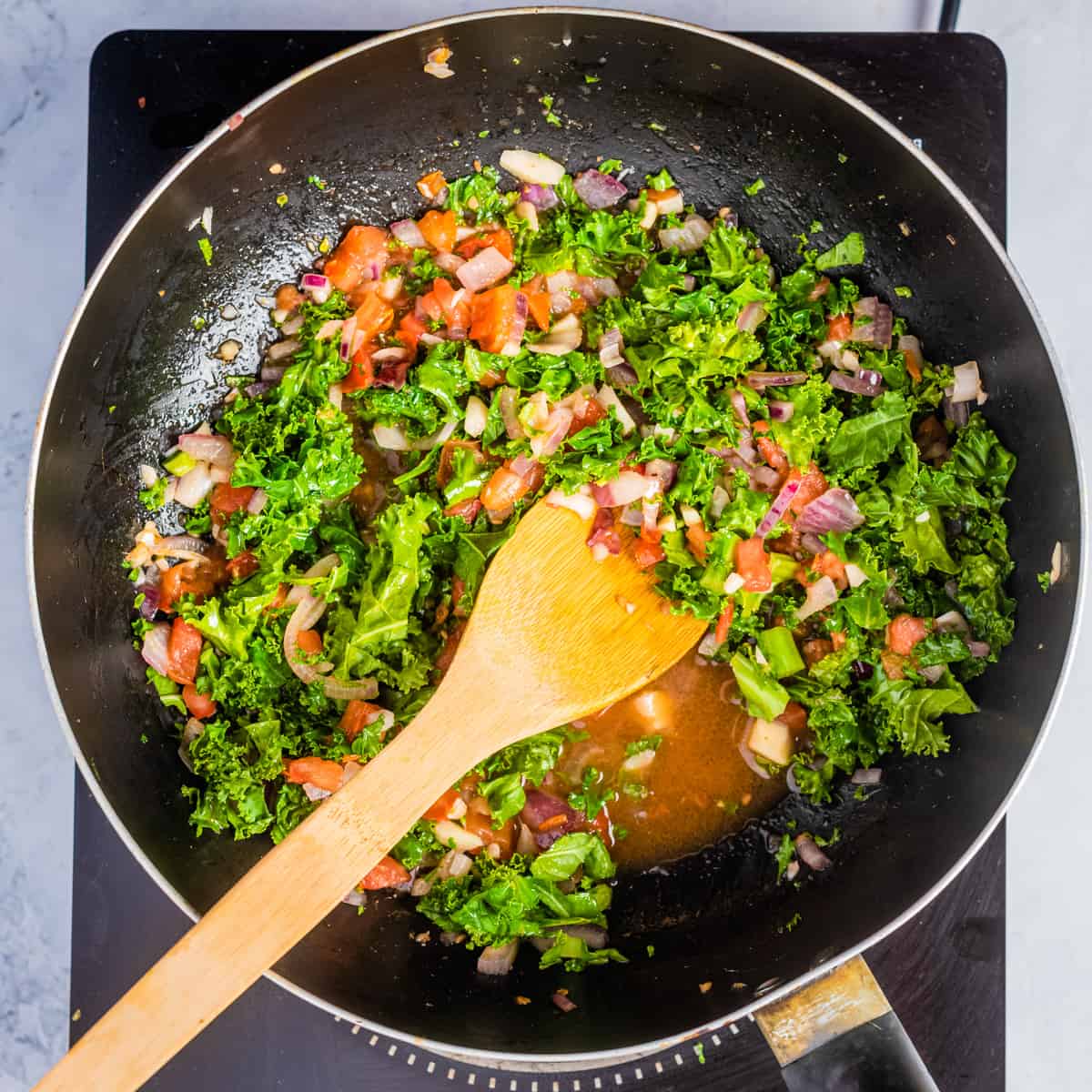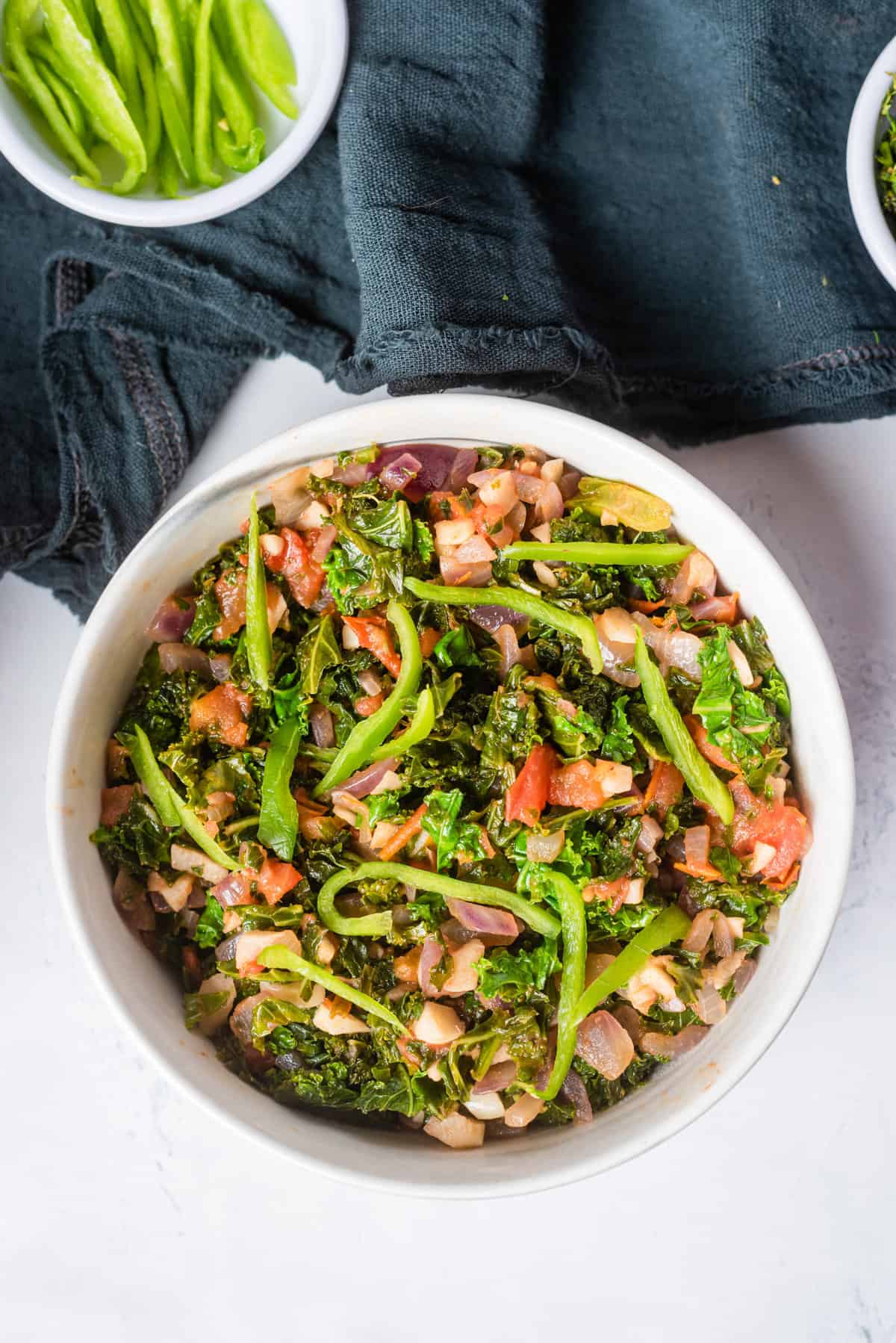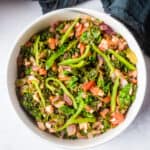This post contains helpful tips and tricks! If you’re in a rush, please use the “Jump to Recipe” above!
⭐ Origin Story
Gomen Wat is a traditional Ethiopian stew made with collard greens or other greens, garlic, onions and warm spices. It originated in Ethiopia and has been a staple dish in the country for centuries. Most Ethiopian restaurants will include some version of this dish, along with other authentic Ethiopian veggie dishes (try my Misir Wot, Shiro Wat or Atakilt Wat)
💭 Why you’ll love this recipe
It’s full of flavor. The combination of garlic, ginger, and other spices gives Gomen Wat a robust flavor that pairs well with any main course. Plus, you can adjust the ingredients to suit your individual tastes!It’s healthy. Greens have vitamins and minerals like calcium, magnesium, potassium, and vitamin A. Plus, they provide plenty of fiber which helps promote digestion and keep you feeling full for longer. So you can enjoy this tasty dish without having to worry about sacrificing your health!Quick and easy to prepare. This is one of those dishes that doesn’t take too long to prepare but still packs a lot of flavor into each bite. All it takes is 15 minutes of prep time and another 10 minutes of cooking time—so dinner will be ready before you know it!
📋 Ingredients and notes
To make Ethiopian collard greens, you’ll need avocado oil (or vegetable oil), red onion, tomatoes, jalapeño, garlic, ginger paste, cumin powder, cardamom powder, red chili powder, chopped collard greens or kale, and salt. You can also use fresh lemon juice for adding acid, and chopped basil for garnish (optional).
Notes and Variations
I tend to make my Gomen Wat the traditional way, but I’ve listed some swaps and variations below that folks have asked me about over the years.
Collard green substitute. For those looking to mix it up, spinach and kale are excellent substitutes for collard greens. I’ve also found that using kale gives it a richer flavor, while spinach makes it a bit milder. I’ve used a mix of greens (kale forward) here in my recipe, but you can adjust this to your preference.Make the dish more filling. Adding some starchy, root vegetables (carrots or potatoes) can help make the dish go from a side to a hearty main. You can also add chickpeas for an extra protein boost. Mix in cooked quinoa or couscous near the end of cooking for added protein and nutrition.Replace the onion with leeks or shallots for a sweeter flavor. Red onions tend to have a sharp flavor that cuts through the greens and spices, but if you want something milder, you can swap them with leeks or shallots. Substitute for cardamom: White cardamom is a pretty integral spice in many Ethiopian dishes. But in a pinch, you can use nutmeg instead of cardamom for a more earthy flavor; allspice or ginger along with mace for mild spiciness; cloves or star anise for subtle hints of spice and sweetness.Make it oil-free: This recipe can easily be made oil-free. Start with a splash of vegetable broth while cooking the onions and tomatoes. Then, add a bit more in place of avocado oil. It tastes just as delicious!
Experiment with Ethiopian spice blends and fats
Use mitmita. Mitmita is an Ethiopian spice blend made from ground bird’s eye chilies, cloves, cardamom, cumin and salt. Mitmita is used in Ethiopian collard greens to bring a subtle heat and complex flavor to the dish. If you have some on hand, you should use a bit of that to elevate the flavors of this dish!Use kochkocha. Kochkocha means “spicy pounded green pepper sauce” in the Oromo language. It’s a green spicy sauce made with onions, basil, cumin, ginger, cardamom and nearly a pound of jalapeños. If you wish, you can also make this sauce separately and then add this at the very end, right as you add the julienned jalapeños to add a bit more spice to the dish.Use niter kibbeh instead of avocado oil. Niter Kibbeh is a traditional Ethiopian spiced clarified butter (similar to Indian ghee). It can include garlic, ginger, cardamom, cloves, black pepper and cayenne. This is used to sauté onions and spices to create an aromatic stew-like base. This recipe is vegan as written, but if you consume dairy products, using nitter kibbeh to make braised collard greens can make this dish even more delicious!
📖 How to make authentic Gomen Wat!
You’ll first need first to wash the greens thoroughly. Then, chop them as small as you can. You can either do this by hand, or you can just add them to a food processor and blitz them. Using a salad spinner can be really helpful for getting them clean and ready to use (I’ve owned this one for years and love it!) Add avocado oil to a large skillet on medium heat. Then add chopped onions, tomatoes, minced garlic, and a pinch of salt to the skillet and sauté until soft (about 5 to 7 minutes). Once the mixture is cooked, add the ginger paste to the skillet and toss to coat. Turn down the heat at this stage so that the mixture doesn’t burn. Add cumin, cardamom, and red chili powder to the skillet and water. Allow it to simmer a bit to indicate it’s well combined. Note: If using just mitmita, add a teaspoon of the spice along with the water. Don’t allow this to cook for too long since it can form a bitter taste! Now, add the chopped collard greens or kale to the skillet in small increments. Stir so the greens and the spice mixture mix quite well together, and increase the heat to medium-high. Cover, and allow it to cook for 15 to 20 minutes, checking on it every 5 minutes to make sure it doesn’t burn. Note: The cook time of greens will vary significantly based on what type of greens you end up using. Kale and collards tend to take the longest. If you end up using softer greens (like spinach), you might want to check after 10 minutes, and keep checking every 2-3 minutes thereafter. Season the dish with salt to taste, and then add the sliced jalapeños. Cover and allow this to cook for another 5 minutes, until the raw taste is gone from the jalapeños. Garnish with some fresh lemon juice and/or basil (optional) and serve hot!
👩🏽🍳 Top Tips to Make the Best Gomen Wat
Making the perfect Gomen Wat is simpler than one might think! Just keep these four easy tips in mind to make the perfect Gomen Wat each time.
Use a large skillet: Though the greens reduce, it’s important to have sufficient space at the beginning so they don’t cook at different rates! Going oil-free: Start with a splash of vegetable broth while cooking the onions and tomatoes. Then, add a bit more in place of avocado oil! Use fresh greens if possible. Use fresh kale or collard greens and discard any that look wilted or yellowed. To use frozen greens, thaw them in a colander and rinse them before adding them to your dish! Prep your ingredients. Cut off any tough stems from kale or collard greens then rinse them thoroughly under cold running water. This helps remove any dirt or grit that may be present on your greens. I highly recommend using a salad spinner to clean your greens. Be generous with spices. This dish has a kick but is not spicy! So, taste and adjust as you go, but make sure you season them as written in the recipe. If you are able to get your hands on mitmita, don’t hesitate to add that to the dish - it will give the dish a depth of flavor and spice! Stir often while cooking, to prevent sticking or burning on the bottom of the pan. There should be enough liquid to cook the greens through, but check on the dish to make sure it doesn’t dry out. Add a bit of hot water or broth if needed to help add moisture.
🍴 Serving and storage suggestions
This Gomen Wat recipe is best consumed with an Ethiopian flatbread (injera). Made from tef flour, injera is spongy and slightly sour, making it the perfect complement to this traditionally hearty dish. Leftover Gomen Wat should be stored in an airtight container and refrigerated for up to three days. For longer storage, you can freeze the food for up to two months. When reheating, be sure to take it out of the fridge or freezer at least 30 minutes before serving. Ethiopian cuisine has many other delicious vegan recipes. Check some of my favorite authentic Ethiopian dishes here:
Ethiopian CabbageShiro Wat (Ethiopian Chickpea Stew)Misir Wot - Ethiopian Red Lentil Stew
If you tried this recipe, don’t forget to comment and rate! ⭐⭐⭐⭐⭐
📖 Recipe
